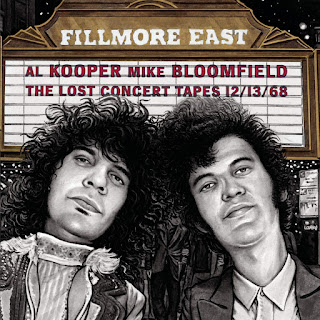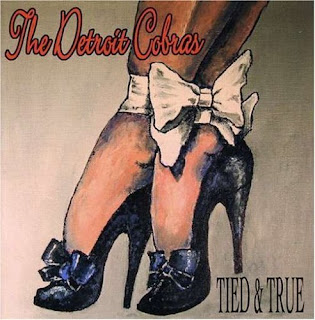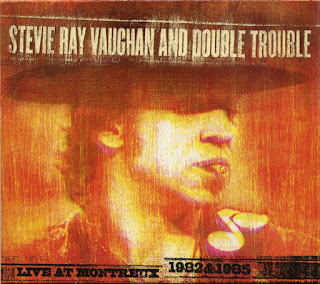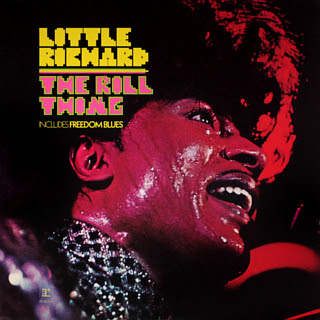Switching over exclusively to violin, Harris became an in-demand sideman during the ‘60s, performing alongside R&B, blues and rock heavyweights like Johnny Otis (who gave Harris his “Sugar Cane” nickname), John Mayall, John Lee Hooker, and Frank Zappa’s Mothers of Invention, appearing on the Hot Rats and Weasels Ripped My Flesh albums. During the ‘70s, the talented violin-mangler recorded a number of albums of brilliant jazz-rock fusion, mixing jazzy instrumentals with soulful R&B, blues and progressive rock.
Don “Sugar Cane” Harris’ Sugar Cane’s Got the Blues
The albums that Harris recorded for the long-defunct BASF label were particularly influential and ground-breaking works, efforts like 1973’s Keyzop and 1974’s Cup Full of Dreams sadly long out-of-print. In between solo albums, Harris formed the critically- acclaimed rock band Pure Food and Drug Act with some friends from Mayall’s band. PDFA recorded a single album, Choice Cuts, in 1972 with guitarist Harvey Mandel. Originally released in 1973 by BASF, the scorching, white-hot Harris live set Sugar Cane’s Got the Blues was recently reissued by European label Promising Music. All I can say is that it’s about time, ‘cause this is one roller-coaster ride of an album, leaving blood on the bricks in its wake. The high point of Harris’ acclaimed but sometimes erratic career, Sugar Cane’s Got the Blues captures a 1971 performance at the Berlin Jazz Festival.
Harris was backed for this performance by a skilled rhythm section that included Soft Machine drummer Robert Wyatt, his high-flying violin complimented by talentedNorwegian guitarist Terje Rypdal and a previous Harris collaborator, German axeman Volker Kriegel. The band line-up for the festival was rounded out by keyboardist/electronic wizard Wolfgang Dauner. This deluxe Promising Music reissue has been provided 24-bit/88.2kHz digital remastering, a gatefold cardboard digipak that approximates the artwork of the 1973 vinyl release, and a booklet with the original liner notes along with new notes from avant-garde musician Eugene Chadbourne. The CD itself is black, looking like a record album, and is slipped into a paper sleeve. Too freakin’ cool…
The album derived from the live performance is divided into four lengthy songs, ranging in time from ten-anna-half, to as long as fifteen minutes plus. Sugar Cane’s Got the Blues kicks off with the energetic “Liz Pineapple Wonderful,” the song cautiously introducing the assembled band's enormous chops before lurching headfirst into the chasm. Above a crashing wave of jazzy instrumentation, Harris spits out a few soulful vocals before launching into a madman’s dance with his electric…and electrifying…violin. Notes fly off the strings like sparks from a burning battery as the band improvises a funky and sometimes cacophonic soundtrack behind Harris. The song circles back around to Harris’ vocals before fading out with a screech of catgut and semi-psychedelic guitar.
Song For My Father
The album’s title track kicks off with a virtuoso violin mugging courtesy of Harris, his instrument sounding at once both melancholy and hopeful as the band fills in behind him with scattershot solar flares of drum, cymbals, and oddly disjointed piano. The song’s dark vibe devolves into a mere whisper of silence before swelling upwards with crescendos of fluttering violin and shattered piano as brushes hit the cymbals with zeal. The last half of the song drops the atmospheric angst and rocks into an improvised jazz-fusion romp before sliding into a bittersweet...almost pastoral...chording similar to its first notes, ending on a strangled high note with Harris’ plaintive vocals moaning “Sugar Cane’s got the blues.”
“Song For My Father" opens with chiming percussion and Wyatt’s fanciful drum-play, the violin kicking in above a Latin-tinged minor-key soundtrack. As Harris scrapes the strings with fierce imagination and focus, the band brings a sense of muted whimsy to the performance. The song is one of the best showcases of Harris’ talents, the string-bender burning up the bow with the speed of a Formula One racecar, the song's many twists and turns providing an exhilarating thrill-ride. The guitar here is sublime, the bass lines fluid, and the rhythmic drumwork at once both bombastic and subdued. The song reminds me of an extended Santana jam at times, and of one of Zappa’s lengthy ‘70s-era jazz-based compositions at other times.
Sugar Cane’s Got the Blues closes with the twelve-and-a-half-minute-plus “Where’s My Sunshine,” which places the spotlight on the talents of the entire band. Above a jagged musical undercurrent, Harris introduces the song by saying, “this song is about a girl, called her Sunshine…and every word of it is true!” before pleading “where’s my Sunshine?” A lonesome, fractured piano blast comes in beneath Harris’ R&B styled vocals, joined by the artist’s screaming violin and a throbbing bass line. Nimble-fingered fretwork punctures the soundtrack, leading back around to Harris’ rhetorical question, the song walking off in a flurry of stiletto-like violin jabs and a rapid storm of lightning piano and thundering percussion.
The Reverend’s Bottom Line
Harris would go on to be a contributing member of the experimental rock band Tupelo Chain Sex during the early ‘80s, recording a couple of albums with them. However, his substance abuse problems allowed him to record only sporadically during the ensuing years, and his personal demons made Harris an unreliable live performer; he later reunited with Terry during the late ‘90s as a revived Don and Dewey. Sadly, Harris died in 1999 from heart disease at the still-young age of 61. This truly gifted musician left behind a significant, if too often overlooked, body of work, the pinnacle of which was Sugar Cane’s Got the Blues. (Promising Music, released February 1, 2008)
Review originally published by Trademark of Quality (TMQ) blog, 2008
Buy the CD from Amazon.com: Don “Sugar Cane” Harris' Sugar Cane’s Got the Blues



















